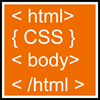
ChatGPT is a computer program that uses advanced artificial intelligence (AI) technology to understand and generate human-like text. It is similar to having an intelligent conversation with a computer!
And guess what? ChatGPT is a language wizard! It’s got a massive dataset, making it one of the most significant language models ever made.
ChatGPT as a Learning Tool
Brainstorming Sessions
When starting a new topic or project, students often engage in brainstorming. They may brainstorm individually or as a class. This essential step fosters the flow of creative thoughts and the evolution of new ideas related to the topic. It sets in motion a chain of innovative thinking where one idea sparks the emergence of another.
Here’s an twist: incorporate ChatGPT into this brainstorming session. Just share an idea with the Bot and seek its suggestions. By making ChatGPT a team member, a broader spectrum of perspectives and possibilities opens up. Having an extra creative mind on your side is always a good idea!
In a classroom discussion about AI, a teacher may want students to discuss ‘drones as privacy threats‘. Following students’ own brainstorming, they can ask ChatGPT for ideas that they may not have considered. For example, it may offer the following list:
- Drones can peek into people’s homes in neighborhoods.
- They can follow someone and know where they are going.
- Drones near government buildings and banks can be dangerous, making us worry.
Thanks to what ChatGPT shared, students can then discuss drone safety concerns. They can also explain their own thoughts on the best ways to fly drones ethically.
Challenging the Thought Process
Encouraging students to think differently makes them more active learners. It also broadens their perspectives. Introducing challenges enhances learning by refining arguments and exploring different viewpoints, leading to a deeper understanding of the subject.

ChatGPT can be used as a teaching tool. When discussing ideas in class, it can assist by finding different viewpoints or asking questions that encourage deeper thinking. It can create debatable ideas, counterarguments, and provide evidence to support your thoughts.

In TechnoEarth and TechnoEnvironment, students explore environmental issues. One of their tasks is to consider various, differing stakeholder views regarding solutions to the problem. Asking ChatGPT for these opposing viewpoints may open their perspectives beyond what they have learned or researched.
ChatGPT and Drama
To add some fun, teachers can recommend that students put on a skit or try improv activities with the assistance of ChatGPT. They can ask the Bot to create a script, making it quick and easy for students to play their roles. Inspire creativity by getting students involved and active.
ChatGPT and Technology
The TechnoHTML course by TechnoKids introduces students to programming, yet in a fun and creative way. Students create a web page on a topic in which they have a personal interest.

Students write text-based code, fix errors, and take on the challenge to make an engaging website for their peers. AI can be a helper. Students can rely on it to debug code when they are trouble shooting. They can compare the suggestions by the ChaptGPT with their work. This teamwork between OpenAI and students ensures a learning experience, helping students to become skilled programmers.
ChatGPT Benefits in Education
- 24/7 Availability
Learn anytime! ChatGPT is always online, offering continuous support for a flexible learning experience. - Diverse Subject Assistance
From science to language and history, ChatGPT covers it all, making learning versatile and fun. - Enhanced Engagement
Say goodbye to dull lessons. Incorporating AI into education makes learning meaningful, boosting student interest and active participation. - Language Proficiency
Improve skills with ChatGPT, receiving grammatically correct responses to build language proficiency for future writing tasks.
Limitations of ChatGPT in Education
- Potential for Misinformation
Bots pull answers from existing information, and sometimes, it might share details that are not accurate. So, remember to double-check the essential facts, and you’re good to go! - Less Personal Touch
While artificial intelligence is a fantastic tool, it doesn’t replace the personal relationships, emotional support, and understanding that a teacher brings to the classroom. - Too Much Dependency
Relying too much on AI might limit independent thinking and research skills. Teachers must set limits on its use.
If ChatGPT is used wisely, it can be a versatile companion in education. It sparks creativity, lends a hand in brainstorming, and infuses engagement into conventional classroom learning. Artificial intelligence is a part of our lives. Students should learn how to use it as an effective tool, while at the same time understanding its limits and drawbacks.
